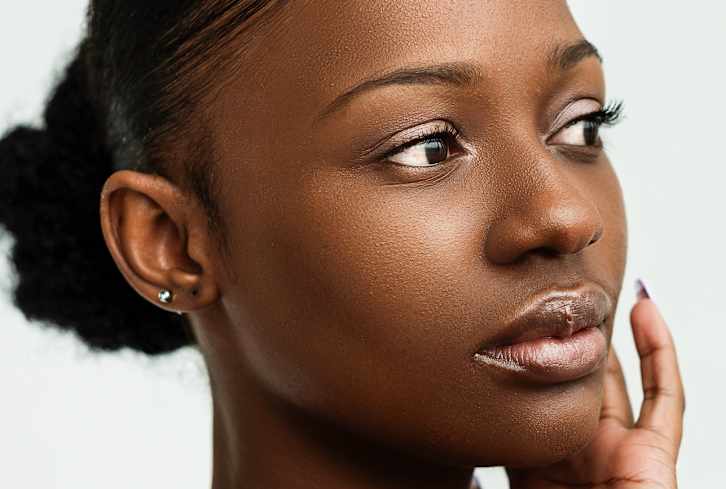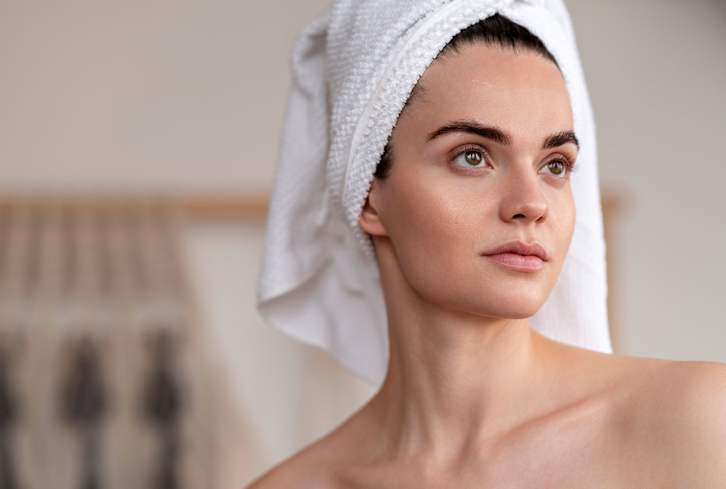Advertisement
Tune In: All The Major Beauty Trends That Will Reshape The Beauty Industry


When beauty writers and reporters have questions about formulas, ingredients, and product innovations, we turn to cosmetic chemists. These experts are the backbone of the beauty industry: They create the formulas we know and love, spark innovation by introducing novel ingredients to the market, and help keep us informed about how products work on the skin.
And when beauty writers and reporters have questions about clean and natural formulas, they turn to one woman: Clean cosmetic chemist Krupa Koestline, founder of KKT Innovation Labs. Koestline is one of the leading voices in clean chemistry, helping provide interesting nuances to complicated formulas and topics. She's also a longtime source for mindbodygreen, providing us endless insights for stories and beyond.
And today, she joins me on mindbodygreen's beauty podcast Clean Beauty School (as a repeat guest!) to talk about what MoCRA gets right and wrong, the clean beauty backlash, and the most exciting beauty trends on the horizon—including the three here.
Check them out, then be sure to tune in to the entire conversation below or wherever you listen to podcasts.
Fermentation
Fermented skin care has taken the beauty industry by storm. And, no, this trend isn't about using kombucha as a toner. It's actually born of exciting biotechnology that made it possible to make ingredients out of the formation process, notes Koestline.
"Fermentation has been around forever, but thanks to biotech, we figured out how to use fermentation to make ingredients," she says. "For example, sodium hyaluronate used to be derived from eggshells, but now it's all fermentation. Because something is obtained through fermentation, the quality improves, the purity improves, and the precision to get a particular molecule improves."
Fermentation can generate ingredients like collagen, squalane, CoQ10, butylene glycol, or elastin using biotechnology, she says.
These ingredients contain beneficial amino acids, beta-glucans, vitamins, peptides, and ceramides, she adds, and through the fermentation process, these molecules become more easily absorbed by the skin. This means they can penetrate deeper without irritation.
It's also, she notes, more sustainable. "You don't have to harm animals or do a bunch of agriculture to harvest an ingredient."
She also points to fermented extracts as another way this shows up in skin care. "For example, there are brands that have started to ferment watermelon or ferment various botanicals to get their benefits," she says. "Another example is centella asiatica, which is a very beneficial anti-inflammatory ingredient. But now, using specific strains of bacteria we can reduce the size of the particle, making it even more effective. And because it's a ferment, it has low pH, which means it's better for your skin and biome."
Hyper niche products
When Koestline and I talked about the market broadly, we lamented about how oversaturated it seems to be—with no signs of stopping. There are countless new products and brands launched around the clock, leaving beauty consumers at a loss for what will work for them.
As a sort of "backlash" to the onslaught of products, Koestline notes that she's excited to see more and more products that are hyper-niche. "I love seeing people creating for specific communities and needs rather than just going 'this is for the entire world,'" she says. "Now it's more, 'I'm going to focus on this specific population and people who have this issue," she says. "I think it's been pretty good to see those niche products."
Product and brand specificity has been a refreshing turn to see as an editor too. It makes sense that brands are no longer trying to achieve "universal" application, when in reality beauty is hyper-personalized to begin with.
"Plus as a chemist," Koestline notes, "I enjoy working on specialized products. I get to think outside the box and understand a completely nuanced application."
MoCRA
In late 2022, a bill passed in Congress implementing a massive and long-overdue update to the FDA's regulatory oversight of the beauty industry. It was called MoCRA, and it left beauty enthusiasts optimistic that a step had been made—but pessimistic about what it meant in reality. Almost two years later, Koestline says the beauty industry is still a bit unsure of what the legislation means in practice.
"It's the first step in the right direction, but does it mean that everybody is going to do what they have to do on paper? Well, we'll see how that pans out. Everyone is a bit skeptical because it's the first thing they've done since the seventies," she explains.
Koestline points to news that some brands selling strong at-home peels received warnings from the FDA1 that these formulas were too concentrated (and potentially damaging) to be used outside the supervision of a professional. "I'm glad they're looking at it," she says. "These brands got notices by the FDA basically saying, 'What the hell are you guys doing?' These peels had a certain acid percentage that were not safe to be used by just anyone. So overall, the FDA's vigilance in the beauty industry has increased, which is amazing."
But when asked what she thought we needed to see in the next round of legislation, she had thoughts.
"If they were coming out with Mochra 2, I think it would be very important for them to ask for proof that the brand has done all the testing that needs to be done beforehand," she says. "They say a blanket statement about how a product should be safe, but they don't define what that means. Stability testing is something that should be required but, more importantly, RIPT testing."
She goes on to explain that Human Repeat Insult Patch Test (HRIPT or RIPT) helps ensure that the formula is safe for skin contact and does not cause irritation.
In addition, "ophthalmology testing for things around the eyes should be a requirement, and preservative efficacy tests should be a requirement," she says. "There are people who will tell you that these are requirements now, but they are not because they are not enforced."
Tune in:
Hear our conversation in its entirety here:
Watch Next
Enjoy some of our favorite clips from classes
Enjoy some of our favorite clips from classes
What Is Meditation?
Mindfulness/Spirituality | Light Watkins
Box Breathing
Mindfulness/Spirituality | Gwen Dittmar
What Breathwork Can Address
Mindfulness/Spirituality | Gwen Dittmar
The 8 Limbs of Yoga - What is Asana?
Yoga | Caley Alyssa
Two Standing Postures to Open Up Tight Hips
Yoga | Caley Alyssa
How Plants Can Optimize Athletic Performance
Nutrition | Rich Roll
What to Eat Before a Workout
Nutrition | Rich Roll
How Ayurveda Helps Us Navigate Modern Life
Nutrition | Sahara Rose
Messages About Love & Relationships
Love & Relationships | Esther Perel
Love Languages
Love & Relationships | Esther Perel
What Is Meditation?
Box Breathing
What Breathwork Can Address
The 8 Limbs of Yoga - What is Asana?
Two Standing Postures to Open Up Tight Hips
How Plants Can Optimize Athletic Performance
What to Eat Before a Workout
How Ayurveda Helps Us Navigate Modern Life
Messages About Love & Relationships
Love Languages
Advertisement

We Need To Talk About Toxic Femininity In Beauty: Ever Encounter These Examples?
Perpetua Neo, DClinPsy

We Need To Talk About Toxic Femininity In Beauty: Ever Encounter These Examples?
Perpetua Neo, DClinPsy

We Need To Talk About Toxic Femininity In Beauty: Ever Encounter These Examples?
Perpetua Neo, DClinPsy

We Need To Talk About Toxic Femininity In Beauty: Ever Encounter These Examples?
Perpetua Neo, DClinPsy









